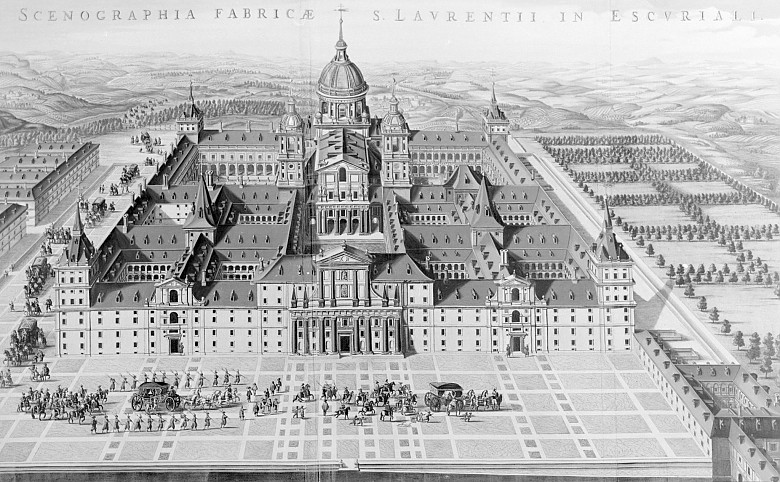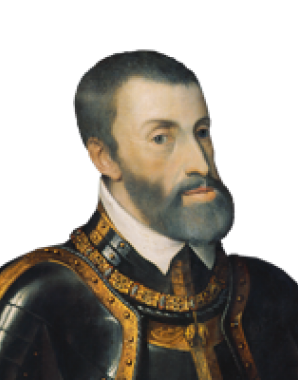Philip II as regent over the Spanish Empire
The creation of a Habsburg global monarchy and the restoration of the Catholic Church were the overarching aims that Philip adopted from his father Charles V.
Philip continued his father’s policy of hegemony in Spain. But whereas Charles V, furnished with an overwhelming sense of mission, tried to break resistance using his royal authority, Philip made use of a bureaucratic apparatus and military force.
In 1555 he assumed rule over his father’s dominions. This was a difficult time: Spain was involved in a war with France, and on the verge of financial ruin as a result of Charles’s ambitious power politics. In 1557 the state was declared bankrupt – and this was not to be for the last time.
The war with France ended in victory for the Spanish forces at the Battle of St Quentin, which led to the Treaty of Château Cambrésis in 1559. This is regarded as marking the actual start of Philip’s regency, as it ended a conflict that he had inherited from his father. Philip had also recently become a widower for the second time, following the death of Queen Mary far away in England in 1558.
Philip finally moved the centre of Habsburg interests from the Low Countries to Spain. Madrid, lying in the Spanish heartlands, became the new capital.
Philip’s style of rule was characterized by growing bureaucratization. An elaborate apparatus of officials took over communication between the king and his various dominions, since Philip was aware of his lack of charisma as monarch. He never left the Iberian peninsula again, ruling his empire from his desk. This was a new, modern but also sterile style of ruling, much in contrast to the peripatetic nature of his forefathers’ reigns, when the king had travelled from residence to residence in order to demonstrate his presence.
Philip replaced the traditional elites of aristocratic advisors at his court, surrounding himself instead with secretaries and lawyers from the middle classes and establishing a professional apparatus of bureaucrats. However, finding it difficult to delegate his duties because he wanted to keep a tight hold on the reins of government, the king subjected himself to an enormous workload. This meant that he wasted time and effort on less important matters, which gave rise to a ponderous machinery of administration whose sluggishness was reinforced by the limited means of communication of the times, a fatal combination for a global empire such as Spain.
As monarch his main focus was on the preservation of kingly authority. The complicated rules of Spanish court ceremonial made the king a remote and unapproachable figure. The distance between the king and those around him was reinforced by Philip’s personality: he was a solitary person, shy and unsociable by nature.
Philip’s life project and the symbol of his reign is the palace and monastery of the Escorial, built as his residence and the centre of his empire in the bleak uplands of Castile.













